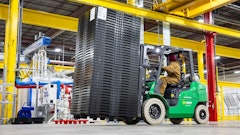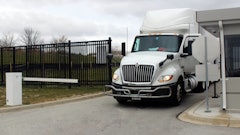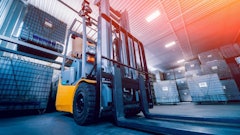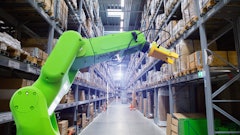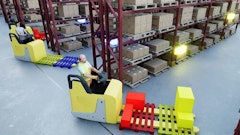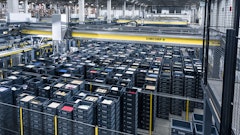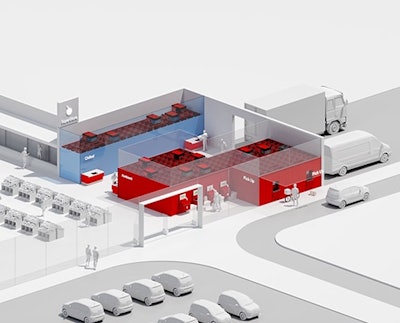
Convenience is now the driving force behind every consumer decision, shaping and defining all shopping behaviors. We live in a world where speed of access and availability can win or lose a customer's business, forcing companies across all sectors to evolve to remain competitive.
For the grocery industry, there’s no question that over the past decade e-commerce has been on the rise. And, through the acceleration of delivery speeds via technological innovation, increased stock availability, and greater choice, customer expectations of the e-commerce experience have grown as well.
With shopping behaviors constantly changing and customers always online, retailers must be ready for that next purchase while remaining flexible and maintaining brand integrity. Although online shopping is increasing, in-store shopping is still preferred by many and retailers must successfully manage both experiences, keeping consumers happy and fridges full.
E-commerce on the rise
Online shopping is now one of the most popular activities globally, dictating the way that many retailers do business. Consumers are shopping anywhere, anytime and any way they want – also known as “micro-moments.” This is when shopping is done whenever and wherever while doing something else – the result of consumers' easy access to the internet through smartphones, tablets, etc.
This has put growing pressure on retailers to provide a smooth e-commerce experience, leading to challenges at the distribution level, with existing systems unable to provide the required improvement in processing times or accommodate larger storage spaces. Manual operations simply cannot keep pace with this steady growth, and new systems are being evaluated as a result.
Brick-and-mortar developments
The shopping experience has already shifted dramatically to online and digital touchpoints in recent years. E-commerce has become a single, focused expression of brand offering across the world. But, as a society, there will always be those who still value personalized shopping experiences.
Being able to touch or taste products, pick out perishables in person, evaluate labels and interact with a brand on the shopping floor is still valuable to many. The retail sector should consider how the world of e-commerce can begin to merge with brick-and-mortar to provide the ultimate grocery shopping experience.
Many grocers are looking to implement new and unique shopping experiences. For example, some have kept their traditional setups in the form of aisles but added a digital component. New technology includes digital signage to update item costs, in-store robots, item scanning while shopping, self-checkout stations and more – offering a truly unique shopping experience that e-commerce alone cannot facilitate.
The latest trend has been buy-online-pick-up-in-store (BOPIS). In this model, brick-and-mortar grocery stores become “hubs” for the retail experience. These purchase process variations help brands maintain foot traffic to stores while providing greater convenience to the customer. In fact, according to McKinsey & Company, 40% of Americans tried a new shopping method such as BOPIS over the past year.
On the positive side, these challenges and attempts at solving them have spawned fresh approaches to how businesses run their day-to-day operations. In particular, finding ways to ensure that retail centers are operated more safely and efficiently. No longer limited to operating large centralized warehouses and distribution centers, many are turning to in-store automation.
Automation is key
The implementation of robotics and automation can give grocery retailers the edge they need to take on some of the giants in the industry and meet surging demand. Depending on the solution, automation provides up to four times the efficiency and speed of delivery compared to a human workforce. As we continue to envision and shape the future of e-commerce, robotics technologies will transform order fulfillment and shopping behaviors. So, what might that look like?
In short, automated distribution center storage requires a fraction of the space. Utilizing the space in or adjacent to brick-and-mortar stores, these smaller facilities could house micro-fulfillment centers (MFC), which are robotic systems that provide localized storage and warehouse space in the facility.
An MFC is typically a small building or space (averaging 8,000-15,000 square feet) holding 80% or more of a retailer’s SKU count, powered by a robotic solution. They represent an appealing middle ground between large-scale but remote automated warehouses and labor-intensive in-store fulfillment, allowing grocers to maximize limited space while minimizing the distance between product and customer. This enables retailers to have faster and more efficient e-grocery order fulfillment through both in-store pickup and rapid home delivery. With their flexibility, scalability and agility, MFCs can help the food and beverage industry address and tackle storage density, operator productivity and lead time while removing the chance of human error.
Grocers can rely on MFC robotic systems to sort and pick items for dispatch, leaving employees to focus on replenishing store shelves and interacting with customers. In addition to the general improvement in customer service and experience, MFCs also improve businesses' sustainability credentials, shorten last-mile transit times and reduce the need for larger distribution centers. Some MFCs also have a cubic storage system allowing for a denser operation, where products can be stocked in “bins” stacked one-by-one within warehouses. This creates an aisle-less solution, which saves on space and provides greater storage capacity. Wasted space is wasted money, and the retailers who have implemented MFCs have seen great success.
Change is here
There is no doubt that grocers have faced unique challenges over the past year, between the Coronavirus disease (COVID-19) pandemic and the growth of e-commerce. The time has come for retailers to evaluate their operations and begin to implement innovative automated solutions to stay competitive and modernized. Keeping consumers happy and meeting demand are the top priorities of all grocers. Automation is the key – are you ready to improve your customer experience?

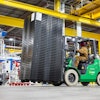






![Adobe Stock 280800711 [converted]](https://img.foodlogistics.com/files/base/acbm/fl/image/2021/08/AdobeStock_280800711__Converted_.611e898daa123.png?auto=format%2Ccompress&fit=crop&h=167&q=70&rect=0%2C53%2C900%2C507&w=250)
